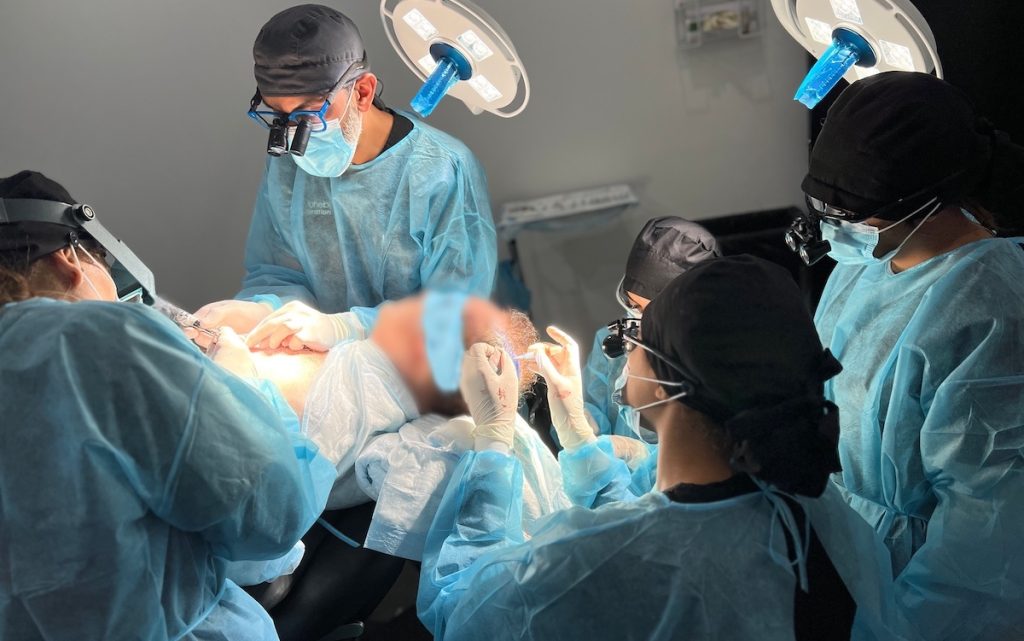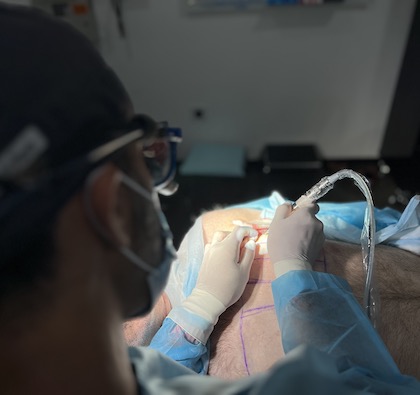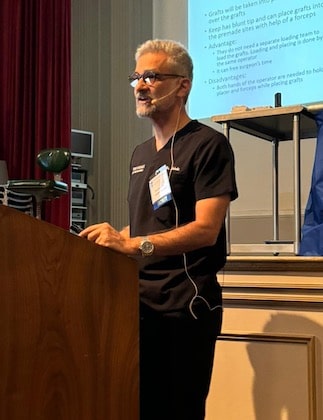PP405: The Breakthrough Stem Cell Technology That Could Redefine Hair Restoration and Rejuvenation
As the demand for hair restoration solutions grows, a new molecule—PP405—has emerged as a promising candidate in the field of hair rejuvenation. Developed by Pelage Pharmaceuticals, this innovative compound targets dormant hair follicle stem cells and aims to trigger natural hair growth without relying on hormones or invasive procedures. For patients and professionals in hair transplantation, this could represent a major leap forward in non-surgical hair regrowth technologies.
What Is PP405 and Why Does It Matter for Hair Rejuvenation?
PP405 is a topical small molecule designed to reactivate dormant hair follicle stem cells, effectively restarting the hair growth cycle. Unlike traditional treatments like finasteride or minoxidil—which focus on hormonal pathways or vasodilation—PP405 targets cellular metabolism at the mitochondrial level.
Specifically, PP405 inhibits the mitochondrial pyruvate carrier (MPC), shifting energy production within the follicular cells. This metabolic alteration increases lactate dehydrogenase (LDH) activity and boosts the expression of Ki67, a key marker of cell proliferation. The result? Stem cells that have been “asleep” in the scalp’s hair follicles are reawakened, initiating new hair growth.
This approach not only offers a novel mechanism but also brings the promise of hair restoration through stem cell rejuvenation, an area of increasing interest in dermatology and regenerative medicine.
Clinical Trial Insights: Real Science Behind Hair Regrowth
Early-stage preclinical studies on mice demonstrated that PP405 could induce rapid stem cell activation in hair follicles. These findings paved the way for a Phase 1 clinical trial in humans, where participants with androgenetic alopecia applied a 0.05% topical solution daily.
After just seven days, scalp biopsies showed statistically significant increases in Ki67 expression, suggesting real activation of human hair follicle stem cells. Importantly, the treatment was well tolerated, with no systemic absorption detected—an essential safety benchmark for future hair rejuvenation therapies.
Following this, a Phase 2a randomized, placebo-controlled trial launched in 2024 to assess longer-term effects in a diverse patient population. This next phase will measure hair density and thickness over time, providing crucial data for how well PP405 supports hair regrowth in both men and women.
What Makes PP405 Different in the Hair Restoration Landscape?
- Non-Hormonal Action: PP405 doesn’t interfere with testosterone or DHT, making it a viable option for a broader population, including women.
- Stem Cell Activation: By working at the cellular level, PP405 brings regenerative science into hair restoration, similar to advancements in PRP (platelet-rich plasma) or exosome therapies.
- Topical Convenience: Easy application means better compliance, especially for those hesitant about oral medications or surgical hair transplants.
- Scalability and Compatibility: As a topical, it may complement existing treatments, from FUE hair transplants to laser therapy, expanding its use in clinical practice.
The Future of Hair Restoration: Stem Cells and Regeneration
While still in early clinical stages, PP405 represents a paradigm shift—from managing hair loss to reversing it through biological rejuvenation. If ongoing trials confirm its safety and efficacy, PP405 could emerge as a foundational tool in modern hair transplantation clinics, possibly even reducing the demand for surgical intervention by enhancing native growth.
This aligns with a larger trend: integrating stem cell therapy and metabolic modulation into aesthetic medicine and dermatology. In a few years, we may see PP405 or similar agents used alongside follicular unit extraction (FUE) and other transplant techniques to stimulate donor and recipient zones, boost yield, and improve overall hair density.
Final Thoughts
PP405 may still be navigating the clinical trial pathway, but its approach—awakening dormant stem cells in the scalp—marks one of the most scientifically grounded and exciting developments in hair restoration technology today.
For patients, doctors, and researchers tracking the next generation of hair rejuvenation innovations, PP405 is definitely one to watch.
Meet Dr. Diane Marshall: Where Science Meets Art in Hair Restoration
When it comes to hair restoration, choosing the right doctor is everything—and Dr. Marshall brings something truly special to the table. With a background that beautifully bridges medical science and cosmetology, she approaches hair transplants not just as a medical procedure, but as an art form tailored to each individual.
Dr. Marshall is part of the expert team at Parsa Mohebi Hair Restoration, where she combines her extensive training with a deep understanding of beauty and aesthetics. She earned her Doctor of Osteopathic Medicine degree from Edward Via College of Osteopathic Medicine in South Carolina and went on to complete her residency at the esteemed Henry Ford Hospital in Detroit. She’s board-certified by the American Board of Internal Medicine—a testament to her commitment to high standards and clinical excellence.
But what really sets Dr. Marshall apart is her unique foundation in cosmetology. Before stepping into the world of medicine, she was a licensed cosmetologist. That early experience continues to inform her work today, helping her see each patient not just through a clinical lens, but with an artistic eye for symmetry, hairline design, and overall aesthetic harmony. Her ability to marry science and beauty gives her patients results that look and feel incredibly natural.
She’s passionate about making sure each person she treats feels understood and cared for. During consultations, she takes the time to get to know her patients, listen to their concerns, and develop customized treatment plans that align with their goals. Whether someone is looking for a subtle enhancement or a complete transformation, Dr. Marshall is known for her gentle approach, steady hands, and beautiful results.
If you’re considering hair restoration and want a physician who combines medical expertise with a genuine passion for aesthetics, Dr. Diane Marshall might just be the perfect choice.
Body to Scalp FUE Hair Transplants – Everything You Need to Know
Hair restoration technology has come a long way, offering innovative solutions for individuals struggling with hair loss. For those with insufficient donor hair on their scalp, body to scalp Follicular Unit Extraction (FUE) is a groundbreaking option. This technique utilizes body hair to replenish thinning areas on the scalp, expanding the possibilities for achieving natural-looking results.
What is Body to Scalp FUE Hair Transplant?
Body to scalp FUE involves extracting hair follicles from various body areas and transplanting them to the scalp. This method is particularly useful for individuals with limited scalp donor hair, providing a viable alternative to traditional hair restoration techniques.
- How It Works: FUE is a minimally invasive procedure where hair follicles are harvested one by one and transplanted into balding areas. When scalp donor hair is insufficient, body hair—such as from the beard, chest, or other areas—becomes a valuable resource.
- Customization: The procedure allows surgeons to tailor the transplant, blending body hair seamlessly with existing scalp hair for a natural appearance.
Common Body Hair Donor Areas
Body hair can be sourced from different areas based on availability and texture:
- Beard: Often the top choice for its coarse texture, which can mimic scalp hair density.
- Chest: Provides finer hair suitable for blending into certain areas of the scalp.
- Arms, Legs, or Back: Less frequently used but viable for specific cases, depending on the individual’s needs.
Who is a Good Candidate for Body to Scalp FUE?
This method is ideal for:
- Individuals with limited scalp donor hair due to significant hair loss or previous transplants.
- Individuals with sufficient body and beard hair
- Patients seeking to increase hair density in areas where scalp donor hair alone may not suffice.
- Those willing to accept the unique characteristics of body hair, such as texture differences.
Why Choose Body to Scalp FUE?
This technique offers unique benefits that make it a compelling option for hair restoration:
- Expanded Donor Supply: Individuals with significant hair loss or previous transplants may lack sufficient scalp donor hair. Body hair provides an alternative source.
- Customized Density: Body hair can add volume and texture to areas of the scalp, particularly in the mid-scalp or crown.
- Minimally Invasive: Like traditional FUE, this method involves no linear scarring, offering quicker recovery and less discomfort.
Considerations and Challenges
While body to scalp FUE offers incredible advantages, it’s essential to understand the potential challenges:
- Texture and Growth Cycle Differences: Body hair can differ significantly from scalp hair in texture and growth patterns, requiring skilled blending.
- Specialized Expertise Needed: This procedure demands a surgeon with extensive experience in body hair transplantation to achieve the best results.
- Patience with Results: As with any hair transplant, the final results can take 8 months to a year.
- Realistic Expectations: Since beard and body hair grafts have distinct growth cycles, lengths, and thicknesses compared to scalp hair, patients should set realistic expectations. The final results from body or beard hair transplants may differ and, at times, be less optimal than what is typically achievable with scalp hair transplants
Conclusion
Body to scalp FUE is an innovative solution for hair restoration, offering hope to individuals with limited donor hair on the scalp. By utilizing body hair, this technique broadens the possibilities for achieving a fuller and more natural-looking head of hair. If you’re considering this procedure, consult with a skilled hair transplant specialist to explore your options and develop a personalized treatment plan.
Highlights from the 15th Annual Hair Transplant 360 Workshop: A Hub for Innovation and Education in Hair Restoration
The 15th Annual Hair Transplant 360 Workshop took place in St. Louis on July 19-20, 2024. This esteemed event brought together new and aspiring hair transplant surgeons for an intensive learning experience.
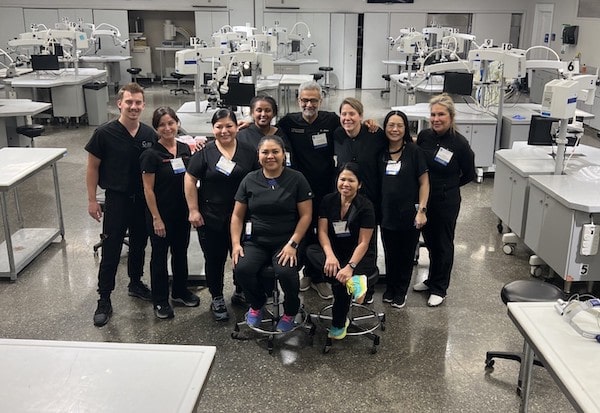
Drs. Samuel Lam, Steven Gabel, and Aileen Ullrich led a distinguished faculty, featuring honored guests Drs. Jean Devroye and Parsa Mohebi. Dr. Mohebi, along with other lecturers, presented the latest trends in hair restoration.
The two-day workshop featured a mix of theoretical and hands-on training, with cadaver lab work sponsored by Saint Louis University. Highlights included lectures on basic hair restoration, graft preparation, and medical management, along with practical sessions on hairline design, recipient site creation, and graft harvesting.
Standout presentations included punch design by Dr. Devroye and implanter technology by Dr. Mohebi, plus discussions on donor management, hair design, and handling challenging cases.
Participants had the unique opportunity to engage in interactive sessions and ask questions directly to experts in the field. The workshop emphasized the importance of personalized training, allowing attendees to gain confidence and competence in various hair restoration techniques. Networking opportunities with peers and industry leaders also added significant value to the experience.
Dr. Mohebi presented a complex hair transplant repair and worked with the audience to identify how to avoid complications in hair transplant procedures and ensure 100% natural results every time. He also showcased innovations in implanter technology for hair restoration and demonstrated the use of the Mohebi Implanter.
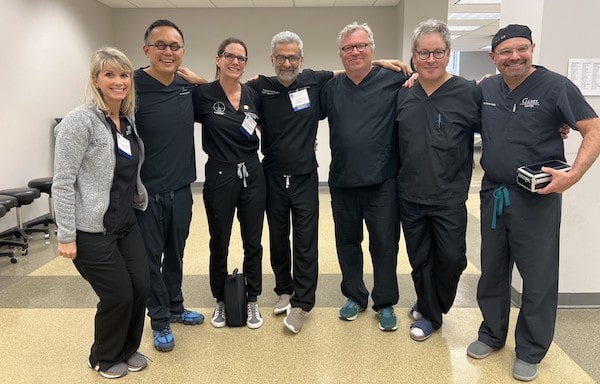
The hands-on portion of the workshop was the most interactive part, giving new hair transplant surgeons a chance to learn the delicacies of hair restoration from seasoned surgeons. The cadaver lab allowed doctors to work with real human tissue and hair, design hairlines, create sites, and extract and place grafts.
This meeting is one of the most sought-after workshops in hair restoration, offered under the leadership of Dr. Sam Lam and with the support of St. Louis University and the Cadaver lab.
Unveiling Our New Facility: Join Us for the Grand Unveiling of Our San Francisco Office!
We are excited to announce the grand unveiling of our new facility in San Francisco. This milestone marks a significant step in providing top-tier hair restoration services to the Bay Area community.
Join Us for Our Open House Event on June 8th!

To celebrate the grand opening, we invite you to our open house event on Saturday, June 8th, from 2:00 pm to 4:00 pm. The event will be held at our new 1 Mississippi St, San Francisco, CA 94107 office. This is an excellent opportunity to explore our state-of-the-art facility, meet our experienced staff, and learn about the latest advancements in hair restoration technology.
Meet Our Expert San Francisco Medical Director and Surgeon, Dr. Manu Gujrati
The open house will be hosted by Dr. Manu Gujrati, our San Francisco Medical Director and Surgeon. Dr. Gujrati is a highly skilled expert in hair restoration surgery and will be available to discuss our advanced techniques and personalized approach to treatment.
Special Offers for Attendees
As a special offer for attendees, we are providing a $1000 gift certificate toward your next hair transplant procedure. Additionally, you can enjoy free 15-minute consultations with microscopic evaluations by our team of experts. Plus, you’ll have the unique opportunity to meet a real patient who has undergone a hair transplant procedure to see their incredible results firsthand.
RSVP Today!
Don’t miss out on this exciting event! RSVP here to secure your spot. We look forward to welcoming you to our new San Francisco office and helping you achieve your hair restoration goals!
Does Finasteride Lower Cholesterol? – Dr. Manu Gujrati Breaks Down the Research
New research shows finasteride lowers cholesterol, protects against heart disease, in addition to helping you keep your hair!

The researchers also found that in special mice used as models for human heart disease and high cholesterol, treatment with finasteride also decreased the size of dangerous plaques (blockages) in arteries around the heart. These are what cardiologists look at to see how bad someone’s heart disease is and what we use stents or bypass surgery to repair in patients with heart attacks and bad heart disease.
This is great news for all our patients, but there is always more to learn. Right now, the research does not tell us what dose of finasteride or for how long a patient needs to take to experience these great benefits.
Parsa Mohebi Hair Restoration is Now Open in San Diego!
While it might be obvious to say, no one really wants to go bald which means they can turn to a hair transplant doctor in San Diego, California for their hair restoration needs.
If you want to gain a long-lasting hairline that is healthy and natural in appearance, a San Diego hair transplant is the most medically significant hair restoration option. In addition, you can choose between FUE and FUT hair restoration surgery. While you will need to perform more research about each technique, we will give you a quick overview of how they are performed and what you can expect during the recovery period.
FUE or FUT San Diego Hair Transplants

While both of these hair restoration procedures have the same goal in mind for patients, they are not performed in the same way.
FUE (Follicular Unit Extraction) is the removal and transplantation of individual hair follicles from the body of the patient. The hair follicles are then implanted into premade incisions in the scalp of the patient. It is also a much less invasive treatment that FUT surgery.
FUT (Follicular Unit Transplantation) is when a surgeon makes an incision and removes a strip of skin from the scalp and then transplants the follicular units in their natural grouping into the targeted area of the scalp. This technique is an ideal choice for patients who are experiencing an advanced level of baldness.
No matter the technique performed by the San Diego hair transplant surgeon, there will be a recovery period after the procedure. The extent of the recovery period depends on the technique performed by the surgeon and the extent of the work during the procedure. Your hair transplant doctor in San Diego, CA, will explain the recovery period to you in advance of the surgery.
The FUE recovery period is the faster of the two and it can result in the formation of tiny scars on the scalp where the hair follicles were removed. Thankfully, these tiny scars are not very noticeable, and they can fade over time. There might be some bruising and swelling but these conditions will resolve on their own. You need to avoid any type of strenuous exercise for a week after the surgery. Use gentle shampoo for a few weeks and also follow the post-op instructions provided by the doctor.
The FUT recovery period takes longer because the surgeon removes a strip of skin from the scalp and then transplants the hair follicles. FUT can also leave a scar where the strip of skin was removed by the surgeon. The scar might not be noticeable if you want to wear your hair longer, but it can likely be seen if you have a short haircut.
San Diego Hair Transplant – Are You an Ideal Candidate?
The age of a hair transplant patient varies by the individual needs of the patient. In general, patients are in their forties or above as they have likely started to see a hair loss progression as time has passed.
If a person is younger, the progression of hair loss will generally be more subtle in appearance. Plus, the hair loss might just be starting which means a hair transplant might not be the best option at this time.
Each patient has individual needs and specific circumstances when it comes to their hair transplant. This is why the first step in the hair restoration process is scheduling a consultation appointment with a hair transplant doctor in San Diego, CA, at Parsa Mohebi Hair Restoration. Dr. Mohebi will examine the scalp to determine the reason for the hair loss and the extent of the thinning or balding hair on the scalp. He will also let you know if you are a suitable patient for the procedure and the type of results you can expect to enjoy.
Hair Loss – What Causes it to Happen?
Hair loss can be caused by a variety of reasons and the amount of hair loss can range from minimal to significant. In some cases, hair loss or pattern baldness can be heredity which means it is passed down from previous generations. Hair loss can also be caused by certain medications, steroids, hairstyles, and treatments such as radiation therapy. In order to fully understand the cause of your hair loss, you will need to speak with a San Diego, California, hair transplant doctor who can diagnose the reason for balding or thinning hair. Once the doctor determines the reason this is happening, they can review your hair restoration options with you including a hair transplant. Parsa Mohebi Hair Restoration can help you get the hairline you desire and also increase your self-confidence.
Contact our San Diego office today for more information.
Hair Transplants – Both Men and Women Can be Patients
While hair transplants are often considered to be a treatment for male patients, the surgery can be successfully performed on both male and female patients. The final results improve the aesthetics of the scalp, and they last a lifetime.
It is important to remember that hair loss affects both women and men and female patients can also enjoy an increase in their self-confidence and an improvement in their self-image. Both male and female patients should consult with their board-certified and experienced San Diego, CA, hair transplant doctor from Parsa Mohebi Hair Restoration to assess whether or not they are an ideal candidate for FUE or FUT. Once our doctor determines that you are an ideal candidate, we can start the process of scheduling your procedure.
Parsa Mohebi Hair Restoration – Get in Touch Today
We invite you to contact the Parsa Mohebi Hair Restoration office about your desired hair transplant. FUE and FUT hair restoration treatments improve the look of balding or thinning hair so take the first step towards an improved hairline when you contact a hair transplant doctor in San Diego, California.
Minoxi-NO! Possible Minoxidil Shortage on the Way
While a hair transplant can give a patient a full head of hair and a rejuvenated hairline, there are some people who are not ready to make the commitment (yet) to hair transplant surgery. One popular hair restoration treatment is minoxidil which is also referred to as Rogaine. Patients who use minoxidil on a regular basis need to know that there might soon be a shortage of the drug in the near future.
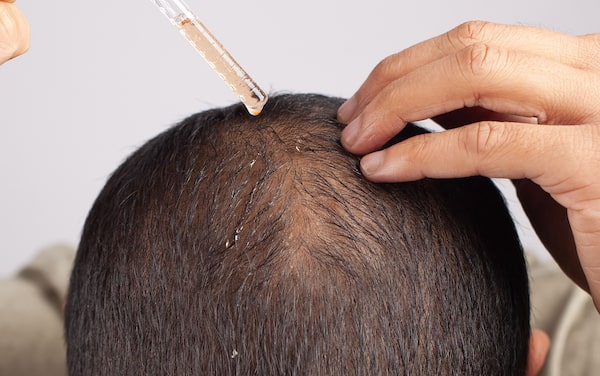
Rogaine – How Does it Work on Patients?
The way in which Rogaine promotes the regrowth of hair is not completely understood but medical experts consider minoxidil to be a vasodilator. However, the vasodilating, anti-inflammatory, and anti-androgenic effects of the drug might be a contributing factor in its success.
Even though the exact mechanism that causes minoxidil to work on the hair is not completely clear, there is a school of thought that it works by partially enlarging the hair follicles in the treated area and also elongating the growth phase of the hair on the scalp. If there are more hair follicles in the growth phase, it stands to reason there will be more hair growth on the scalp.
Minoxidil – Possible Shortage Revealed
A recent report revealed the news about a possible shortage of minoxidil which patients use to treat thinning hair and hair loss. The report also noted that minoxidil is starting to become difficult to find in certain areas of the country.
According to the American Osteopathic College of Dermatology, male pattern hair loss and female pattern hair loss impact nearly 50% of males and about 25% of women by the time they reach the age of fifty. Minoxidil is commonly used by patients experiencing male pattern hair loss and female pattern hair loss..
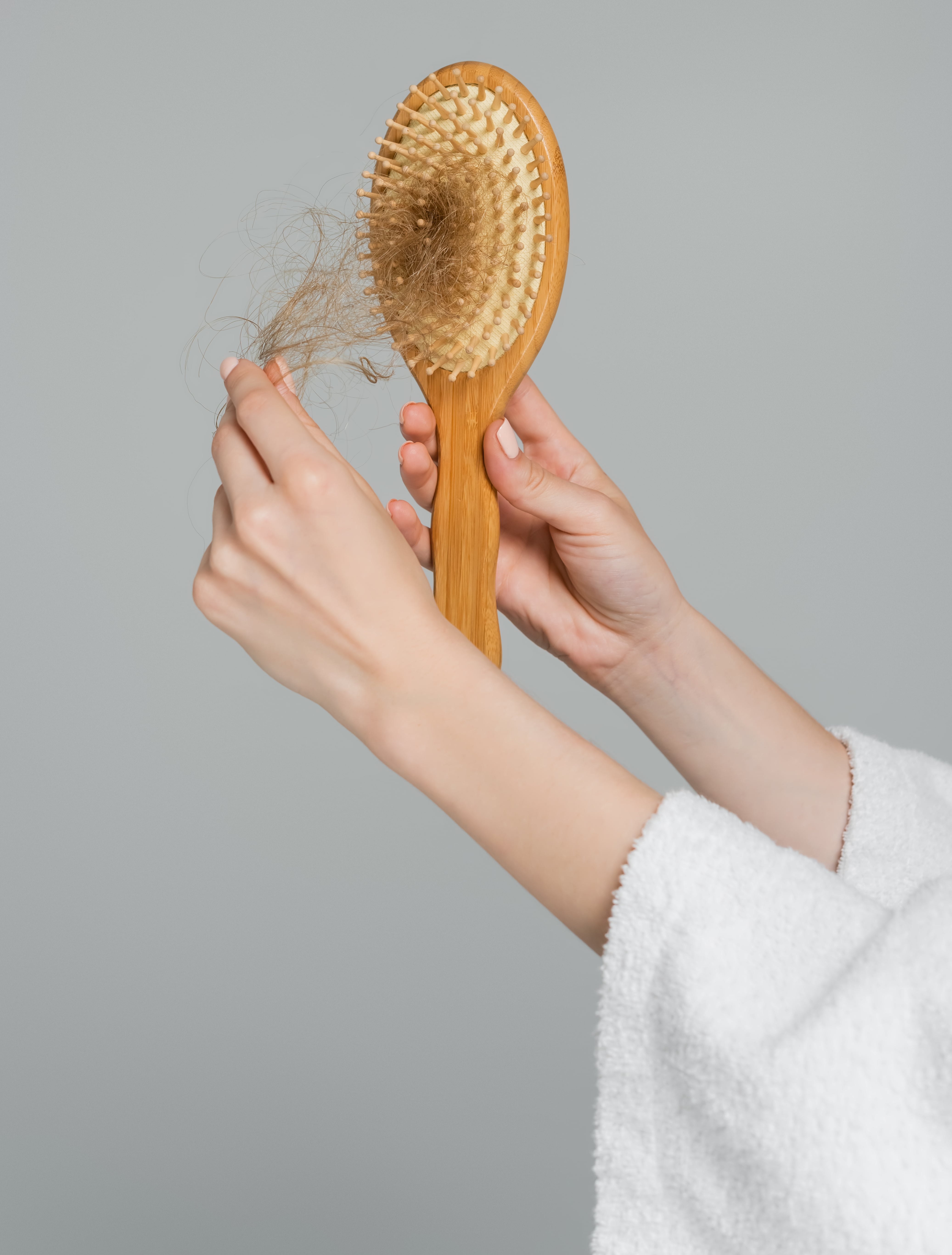 These patients might have a problem finding the medication in certain parts of the country according to a new study conducted by a research team at George Washington University. The study showed that shortages of the thirty-day supplies of the drug are being reported in pharmacies located in the Maryland, Washinton, D.C., and Virginia metro areas.
These patients might have a problem finding the medication in certain parts of the country according to a new study conducted by a research team at George Washington University. The study showed that shortages of the thirty-day supplies of the drug are being reported in pharmacies located in the Maryland, Washinton, D.C., and Virginia metro areas.
According to Dr. Adam Friedman, professor, and chair of dermatology at George Washington University, “The study reveals a significant care gap resulting from shortages of this drug within the DMV, a gap that could translate to the national level. Interruptions in the drug can lead to less effective treatment, and, in some cases, psychological distress.”
Friedman pointed out that, even though minoxidil in a topical form has been approved for quite some time, a dermatologist found, in 2015, that a low oral dose of minoxidil might actually work better for patients. It should be noted that the oral version is not approved by the Food and Drug Administration for the treatment of hair loss. It is often prescribed by medical professionals for that purpose, which has led to an increase in patient interest regarding the drug. Oral minoxidil is currently approved by the FDA for use in treating high blood pressure.
As part of the research study, Friedman and his team of researchers contacted two hundred and seventy-seven pharmacies in the areas of Maryland, Viriginia, and Washington, D.C. These pharmacies included large national chains such as Walgreens, Giant, Harris Teeter, and CVS. The research team found that not all of the contacted pharmacies were able to provide a thirty-day supply of minoxidil written for a prescription in two different doses.
The results were as follows:
- Only 18% of pharmacies in Washington, D.C. had an availability of both doses for a thirty-day period.
- Only 23% of the pharmacies located in Northern Virginia were able to confirm they had both doses available in thirty-day supplies.
- Only 15% of pharmacies in Maryland were able to fill thirty-day supplies of both doses of the drug.
The possibility of a drug shortage could become an issue for dermatologists who are helping patients treat their thinning hair. If the supply of minoxidil becomes hard to find due to a shortage, patients might possibly need to discontinue their use of the medication if they cannot fill their prescription. If a person needs to stop using the medication, their hair loss will return to the same level as before they started to use minoxidil. Plus, additional hair loss could also happen due to the lack of taking the medication.
Minoxidil – What Should Patients Do?
If a person is worried about a shortage of minoxidil when it comes to treating their thinning hair, they should contact their doctor to inquire about this possibility. The doctor can help the patient determine the available supply of minoxidil in pharmacies near their location. The doctor can also inform the patient about other hair loss treatments including a hair transplant. While it might not be necessary for the person to make a change in their hair restoration treatment plan, they will have the necessary information to make an informed treatment decision.


